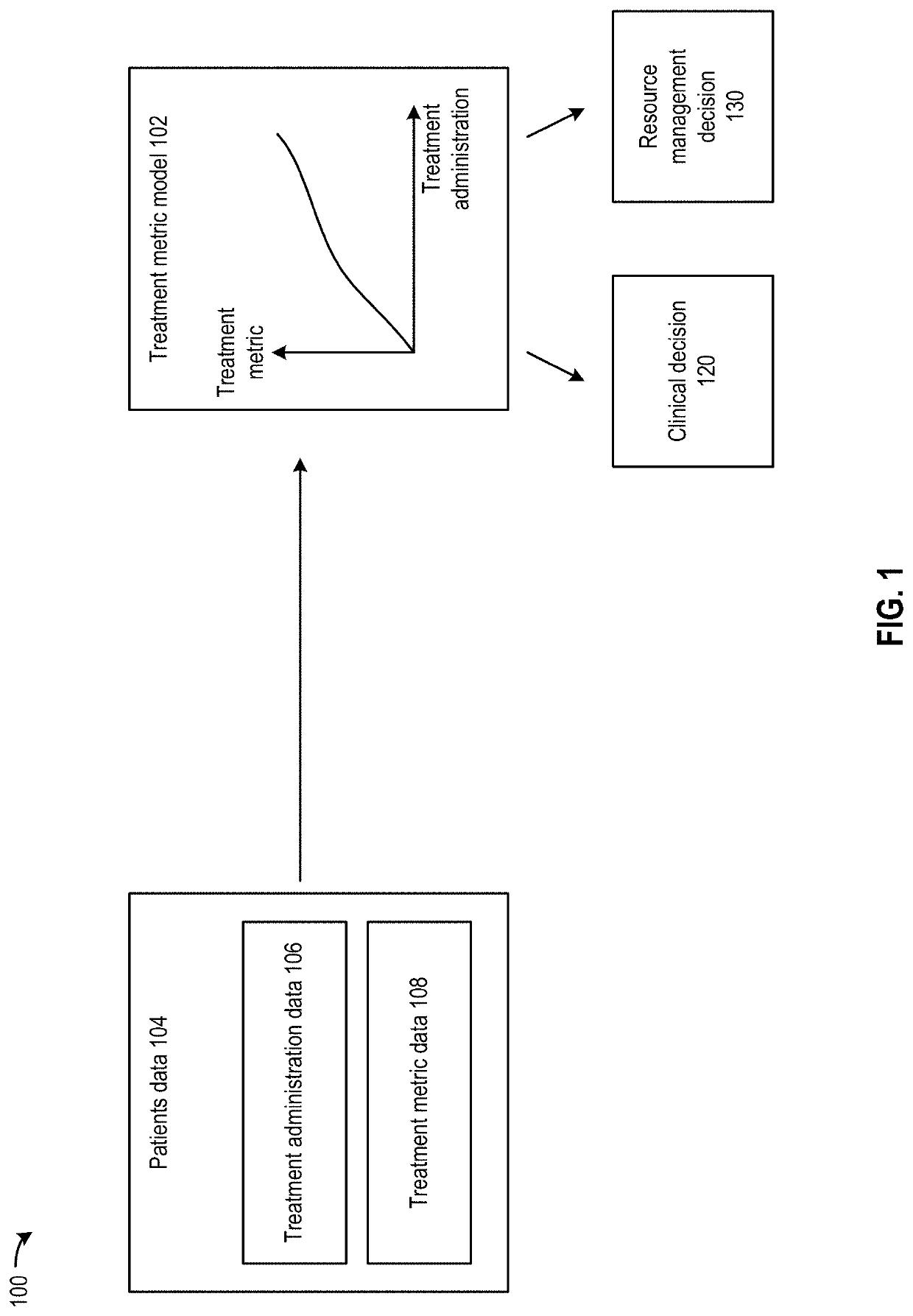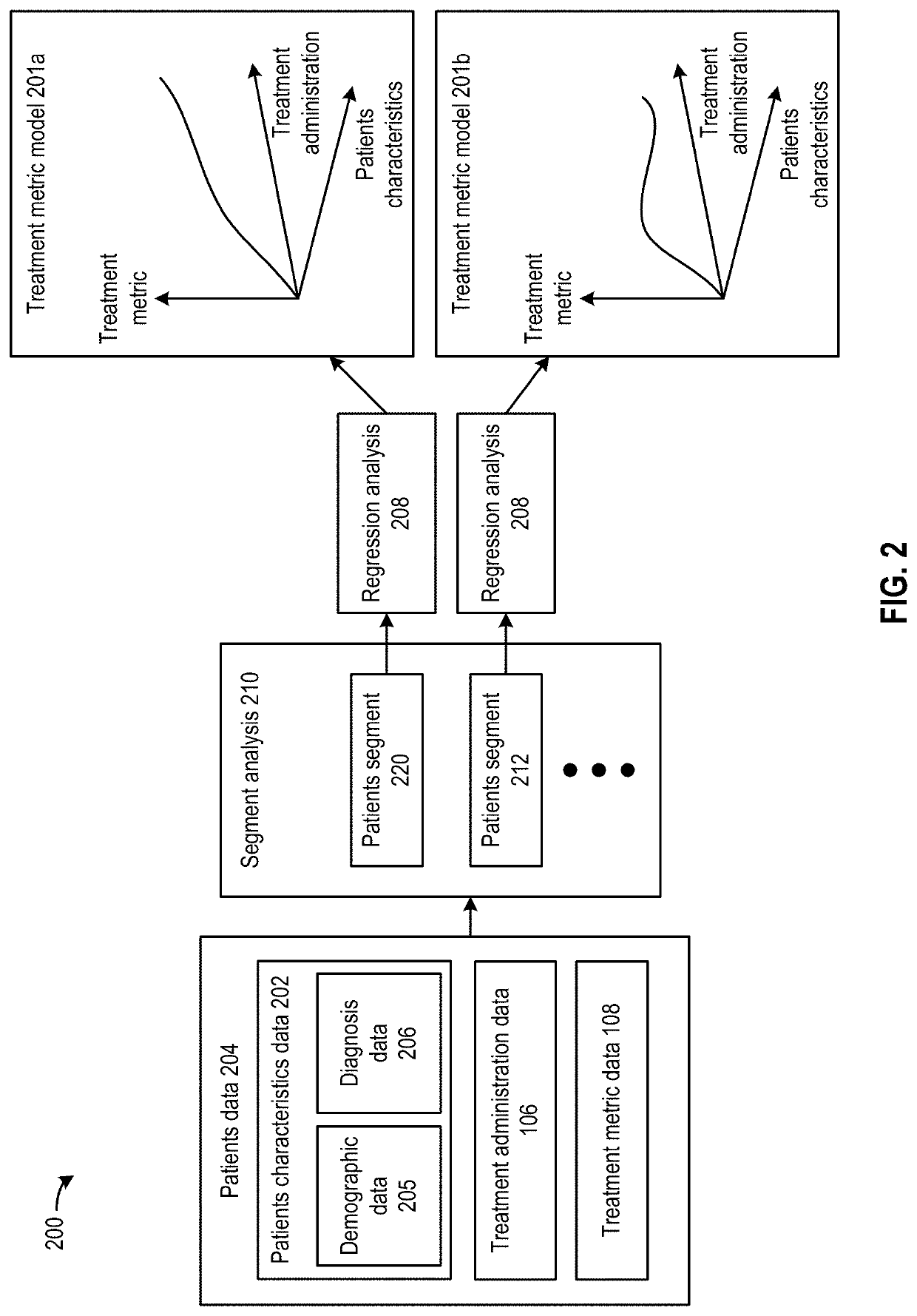Medical treatment metric modelling based on machine learning
a technology of treatment metric and machine learning, applied in the field of medical treatment metric modelling based on machine learning, can solve the problems of bringing a lot of suffering to patients, little is known about how to identify, and economic burden on patients, so as to improve clinical decision-making and medical resource management, and reduce the loh of patients
- Summary
- Abstract
- Description
- Claims
- Application Information
AI Technical Summary
Benefits of technology
Problems solved by technology
Method used
Image
Examples
Embodiment Construction
[0023]Disclosed herein are techniques for performing segment analysis of patients data to identify relationships between different characteristics of the patients data and treatment metrics. A model of influences of the different categories of the patients data on the treatment metrics can be created. The model can be used for various applications such as, for example, improving clinical decision making, medical resource management, etc.
[0024]More specifically, patient data of a plurality of patients can be obtained. The patients may have contracted a common illness (e.g., sepsis), have received medical treatments for the illness, and have since recovered. The patient data of each patient may include characteristics data and treatment administration data of the each patient, as well as metrics data related to the medical treatments. The characteristics data and the treatment administration data may be associated with a plurality of categories including, for example, demographic data...
PUM
 Login to View More
Login to View More Abstract
Description
Claims
Application Information
 Login to View More
Login to View More - R&D
- Intellectual Property
- Life Sciences
- Materials
- Tech Scout
- Unparalleled Data Quality
- Higher Quality Content
- 60% Fewer Hallucinations
Browse by: Latest US Patents, China's latest patents, Technical Efficacy Thesaurus, Application Domain, Technology Topic, Popular Technical Reports.
© 2025 PatSnap. All rights reserved.Legal|Privacy policy|Modern Slavery Act Transparency Statement|Sitemap|About US| Contact US: help@patsnap.com



